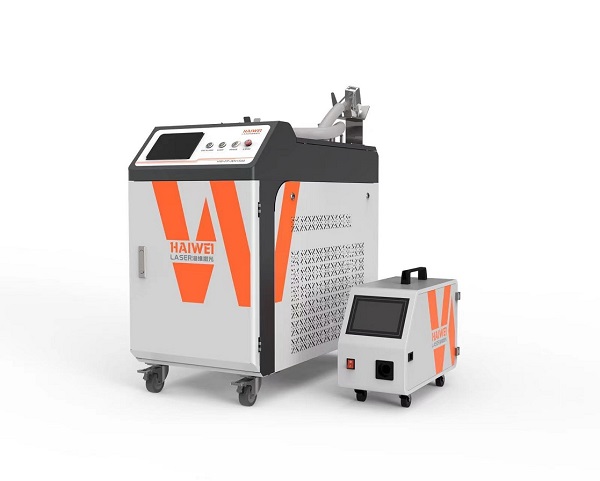How to Effectively Prevent Porosity in Welding with a Laser Welding Machine?
Porosity remains one of the most common defects in welding processes, and even with a high-precision laser welding machine, it can occur if proper precautions are not taken. Understanding the root causes and implementing targeted solutions can significantly improve weld quality and structural integrity.

1. Control Shielding Gas Flow and Purity
One of the primary causes of porosity in laser welding is the entrapment of air or moisture in the weld pool. Using high-purity shielding gas (typically argon or a mixture of argon and helium) and ensuring optimal gas flow rates help prevent atmospheric contamination. Too little gas leaves the weld exposed, while excessive flow can create turbulence, drawing in ambient air.
Best Practices:
Use gas with a purity of at least 99.999%.
Maintain proper nozzle positioning and gas flow rate (usually 15–25 L/min).
2. Ensure Clean Base Materials
Contaminants such as oil, grease, moisture, and oxides on the surface of the workpiece can vaporize during welding and become trapped in the weld bead. This leads directly to porosity. Pre-weld cleaning using solvents, wire brushing, or laser cleaning methods is essential to ensure surface integrity.
Key Recommendation:
Implement automated pre-weld cleaning stations for consistent material preparation.
3. Optimize Laser Parameters
Improper laser power, welding speed, or defocus settings can lead to unstable keyhole formation, increasing the chance of gas entrapment. A stable keyhole ensures smooth weld bead formation and proper degassing.
Parameter Tips:
Avoid excessively high welding speeds that may cause keyhole collapse.
Adjust focal position to maintain consistent penetration and weld pool control.
4. Monitor Ambient Conditions
High humidity or fluctuating workshop temperatures can introduce moisture into the process environment. Keeping the welding area dry and maintaining stable ambient conditions contribute to minimizing porosity risks.
5. Use Advanced Monitoring Systems
Modern laser welding machines equipped with real-time monitoring systems—such as coaxial cameras or acoustic sensors—can detect anomalies during welding. These systems help identify early signs of porosity formation, allowing for immediate adjustments.
Avoiding porosity in laser welding requires a combination of clean materials, precise parameter control, proper shielding gas usage, and environmental management. When selecting a laser welding machine, buyers should look for models with built-in monitoring features and stable beam delivery systems to ensure high-quality, defect-free welds.
Recent Posts
- What are the advantages of laser welding machines in lithium battery pack production lines?
- What issues should be noted when choosing a lithium battery pack production line?
- Quality Inspection and Control of Lithium Battery Module Pack Production Line
- Cell grouping and sorting process in lithium battery module pack production line
- What are the safety hazards of lithium battery pack production lines and how can they be prevented?
INQUIRY

